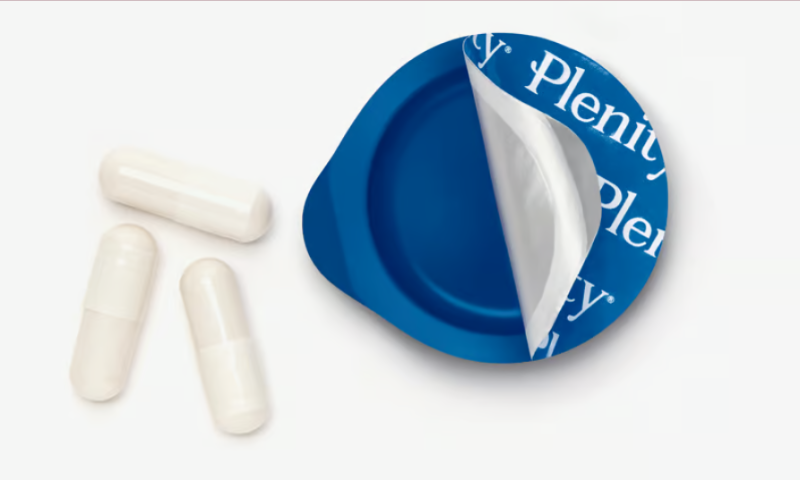Gelesis’ oral hydrogel technology was cleared by the FDA in 2019 based on clinical trials showing that it could help around 60% of users reduce their body weight by at least 5% over the course of six months—and a new study shows that the tech has largely maintained those results throughout its launch into real-world settings.
The prescription-only Plenity treatment is administered via three swallowable capsules that should be taken with 16 ounces of water 20 minutes before lunch and dinner. Once in the stomach, the capsules break up, leaving behind pieces of gel that are modeled after the cellular properties of raw vegetables to take up space in the stomach and help individuals feel fuller faster and for longer periods of time.
The treatment is currently cleared for use by people with a body mass index between 25 and 40 and is meant to be used alongside a doctor-approved diet and exercise regimen. Plenity’s clinical studies spanned patients with a variety of BMIs and those both with and without Type 2 diabetes.
Gelesis unveiled the results of its real-world analysis at the American Diabetes Association’s annual scientific sessions this week. It looked at the records of just under 900 patients who had been prescribed Plenity from Ro, the company’s sole telehealth partner in the U.S.
Those patients were mostly women and had an average BMI of 31—just over the clinical threshold for obesity—and a mean age of 50.
After six months, according to the analysis, about 86% of the Plenity users had experienced weight loss. Among those responders, the average weight reduction clocked in around 9%.
Additionally, even though Plenity is meant to be used alongside a healthy diet and exercise routine, the majority of people included in the analysis said they hadn’t changed their nutrition or activity levels while taking the capsules—and Gelesis noted that those who started their Plenity treatment with the lowest self-reported diet quality had the highest likelihood of responding well to the hydrogel therapy.
That finding, in particular, “is consistent with the hypothesis that Plenity works by emulating the effects of a large volume of raw vegetables,” Elaine Chiquette, Pharm.D., one of the study’s authors, said in Gelesis’ release, adding, “Here is a treatment option for people including those who may be struggling to make those changes to their diet.”
Chiquette noted that the overall results also suggest that Plenity could join the ranks of increasingly popular GLP-1 agonist medications like Novo Nordisk’s Wegovy as aids for weight loss and management alongside diet and exercise plans.
“It is an exciting time where the conversation around treating excess weight and obesity is finally shifting to recognize the need for many forms of treatment,” Chiquette said. “Not one treatment fits all, even GLP-1 agonists, and a need remains for multiple tools and in particular weight management therapies that are accessible, affordable and clinically proven.”

